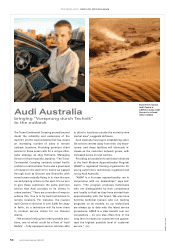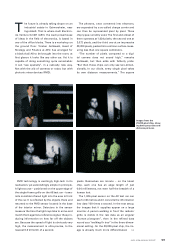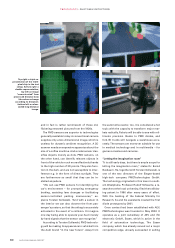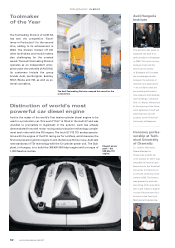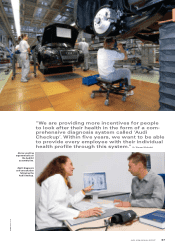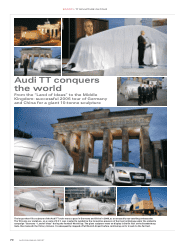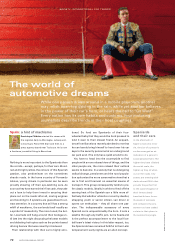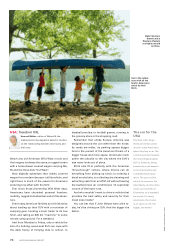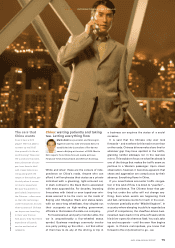Audi 2006 Annual Report Download - page 67
Download and view the complete annual report
Please find page 67 of the 2006 Audi annual report below. You can navigate through the pages in the report by either clicking on the pages listed below, or by using the keyword search tool below to find specific information within the annual report.to maintain health in the long term,
continue learning on the job and keep
nurturing the ability to learn.
WIDUCKEL: We are increasing produc-
tivity everywhere from product design
to process organisation. That does not
automatically mean that work increases
in intensity for the employees. Perfor-
mance is determined most critically by
ergonomics and workplace organisa-
tion. When these are handled properly,
employees can actually contribute
more with less effort. Good working
conditions consequently boost produc-
tivity. For employees to be motivated,
they need prospects that we are offer-
ing them in the form of personal devel-
opment paths and secure employment.
We can organise the conditions of per-
formance and scope for development in
such a way that the current success of
the company can not only still be
achieved but actually increased with an
ageing workforce.
Do the figures add up?
WIDUCKEL: Of course. It is better and
more advisable to invest in the work-
force’s performance than to buy people
out of occupational activity for huge
sums of money. Rising life expectancy
also means that today’s sixty year
olds are now capable of a higher
Breaking new ground
Handling demographic change as an entrepreneurial task: a discus-
sion between Audi Board Member for Human Resources Dr. Werner
Widuckel and demographics researcher Dr. Martina Morschhäuser,
of the Saarbrücken Iso-Institut Interview Nico Fickinger // Photos Michael Wiegmann
>>
SOCIETY: DEMOGRAPHIC CHANGE
65AUDI 2006 ANNUAL REPORT
Have we missed the boat on
demographic change in
Germany?
MORSCHHÄUSER: Demographic initia-
tives were launched here, a commission
enquiry process set up and intensive
PR work done as early as the 1990s. In
terms of the health and employment
rate of older people, the Scandinavian
countries are some way ahead of us.
On the other hand Italy, Spain and
Greece, and to a lesser extent France
and Austria, are lagging well behind us.
Compared with these latter countries,
Germany has already adopted an exem-
plary role in handling demographic
change.
WIDUCKEL: Until now we’ve found it
relatively easy to reach a consensus
with people on pre-retirement part-time
arrangements and semi-retirement as
mechanisms for taking them out of the
employment process. Now, however,
we need to focus the entire occupation-
al biography on the fact that we need to
consider the ability of people to perform
and develop beyond the established
age limits. This paradigm shift does not
merely represent a human resources
and socio-political task; it harbours con-
siderable competitive relevance if a
company’s efficiency is to be main-
tained long-term.
Audi is not in a position to be giving
away money. Can you afford the extra
cost compared with your competitors?
WIDUCKEL: We have no choice in view
of the way the age structure of our work-
force is developing. But what is equally
clear is that we need to meet our profit
targets in order to finance our sched-
uled growth under our own steam.
Additional outlay for coping with demo-
graphic change therefore needs to be
funded by other means.
Audi is aiming to accomplish the
planned increase in production output
without recruiting extra workers. Is that
possible with an ageing workforce?
MORSCHHÄUSER: Older workforces are
not in themselves a problem, and older
workers are not fundamentally less effi-
cient than younger ones. In areas of
activity that place the emphasis on cog-
nitive working conditions, ample scope
for decision-making and well-qualified
employees, an ageing workforce if any-
thing increases your expertise. On the
other hand, in other areas of work that
involve considerable strenuous activity,
the efficiency of older workers may be
impaired forreasons of health, resulting
in more days lost due to unfitness for
work. This is a challenge to both com-
panies and the employees themselves



